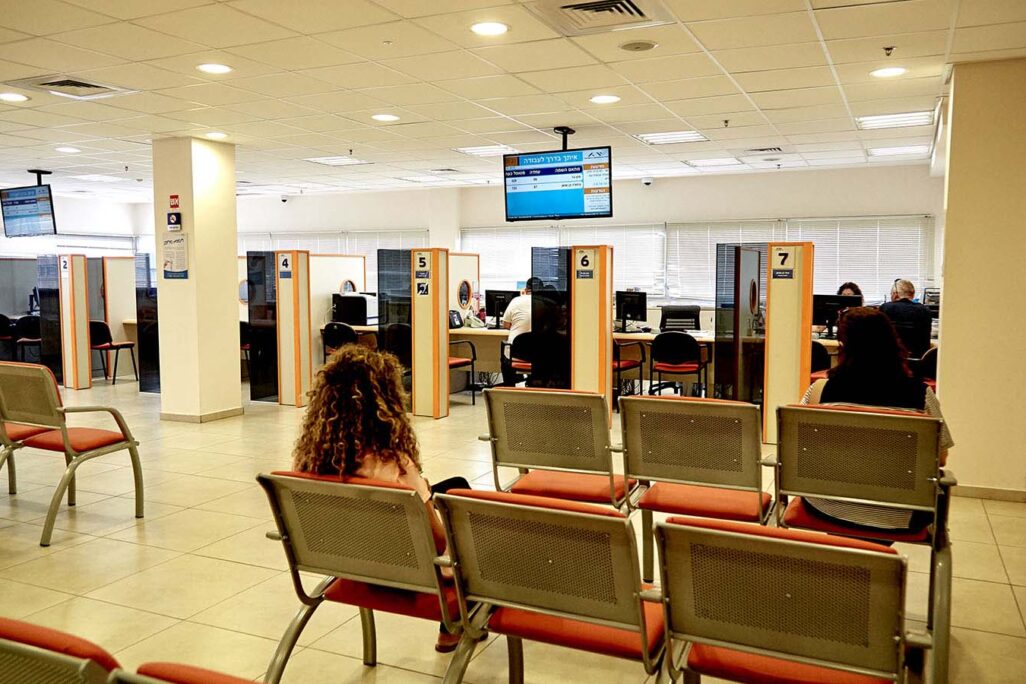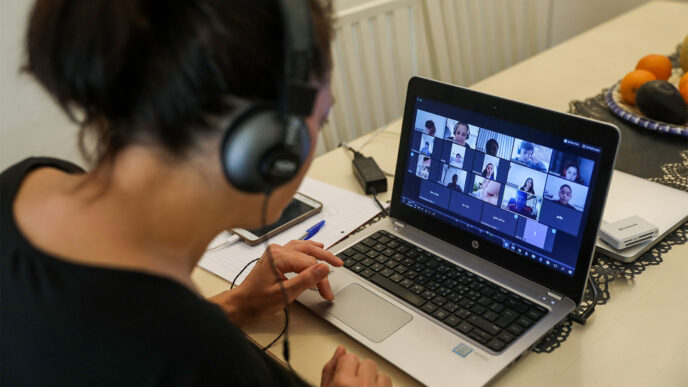
Despite slow advances towards equality in the workplace, the pandemic has proved disastrous for working women in Israel, affecting them more severely than men. This can be seen most clearly in significantly higher unemployment rates during this and previous lockdowns as compared to men.
A report by the government’s Employment Service last week revealed that 144,599 people had registered as seeking employment since the lockdown’s start on December 27, with an additional 200,000 people expected to go on unemployment. A clear majority of those registering as unemployed were women – 63% in the lockdown’s first week, 76% in the second and 68% in the third.
In the second lockdown in October, 70% of those reporting unemployment on their second unpaid leave were women, according to the Employment Service. The unemployed were concentrated in fields considered “female” – education, sales, and the restaurant and events industries.

According to a study by the Taub Center on the impacts of Covid-19 on women’s employment last June, women make up 49% of the workforce, but represented 56% of unemployment claims filed during the first lockdown last spring. The gap was particularly noteworthy among younger women, with 60.5% of claims coming from women ages 20-24.
These numbers are also reflected on a global level. According to a study by the International Labor Organization (ILO) and the United Nations Women's Organization (UNWO), at the end of the second quarter of 2020, the proportion of women out of the labor force in those countries was 1.7 times the rate of men.
Starting off at a disadvantage
There are many possible reasons for the disproportionate unemployment rates. According to Liat Bowers, lead researcher of the Taub study, the primary reason for this is the pressure to leave work and take care of children once schools and childcare closed for the lockdown.
"At the time of closing schools and kindergartens, the logical solution for many families was to sacrifice women's employment to care for children – and single mothers were particularly affected by this situation,” Bowers wrote.
Christine Abu Elhiga (35), mother of two from Nof HaGalil, was put on unpaid leave from her job at Home Center during the current lockdown. She studies mediation as well as being a full time mother, and described the difficulties of the pandemic’s impacts.
“My spouse is an essential worker, so with small children at home, everything falls on me,” she said. “I get up in the morning, clean, cook, keep the older one busy, take care of the younger one. Once a week I study, it's really boring to sit on Zoom for six hours, it's a nightmare to deal with the baby at the same time, but that’s all there is to do.”

“Not getting up every morning for work is very frustrating. And it's not just work, without structure for the children, they have no order, all of life has changed,” Abu Elhiga continued. “I really miss talking to people and working with clients, feeling like I'm alive. I want to get back to my routine, to feel that I am doing things and that I am significant. I am really tired of this situation. "
This too is not only an Israeli issue. According to the ILO and UNWO report, 1.7 billion students worldwide were affected by the shutdown of education systems. Many have since returned to school, but mostly in full or partial online format, requiring parental supervision at home. Today, some 224 million students, more than one in ten, still do not attend school due to prolonged lockdowns.
This state of affairs has forced many families to make difficult decisions about the division of roles of the parents: who will keep their paid job, and who will take care of the household without pay. In households around the world, this decision has mainly caused women, who usually receive lower wages and enjoy less job security than men, to sacrifice their careers.
Women's participation in the labor force is shaped according to the demands of family and household care, factors that do not affect working men. Their participation varies sharply, depending on their marital status and whether they have children, according to the report.
European Union (EU) data shows that during the first wave of the coronavirus pandemic, when the education system was shut down or switched to distanced learning, women were absent from work at a higher rate than men. In the United States, where four times as many women as men left the workforce last September, one in four women who lost their jobs testified that it happened because of a lack of childcare facilities.

Bowers maintains that part of the problem is that women are starting off at a disadvantage to men in the workplace. This makes them more vulnerable, as women tend to work fewer hours than men and more part-time jobs.
A third (33%) of Israeli women were employed part-time in 2018, compared to only 13% among men. Women take more junior positions than men, they earn less on average and have difficulty accumulating seniority as a result of going on maternity leave. All of these increase their chances of losing their jobs or being put on unpaid leave.
Among working parents in Israel, women work an average of 23 hours a week compared to 36 among men, and in most households they are the secondary earners. About 46% of unemployment claimants were households with at least one child under the age of 18, and 18% had a child under the age of two at home, the Taub study showed.
These setbacks threaten to undo women’s advances toward equality in the Israeli workforce in recent years. For example, the hourly wage gap between men and women, which stood at over 17% in 2008, went down to less than 16% in 2017.
In addition, 74% of Israeli women work, compared with an average of 66% in all OECD countries. This is despite the fact that the birth rate in Israel (3.1 children per woman) is significantly higher than the OECD average (1.7 children per woman).
“Women’s” fields
Another possible reason for the disproportionate unemployment during the pandemic is the way that so-called women’s fields are more disrupted by lockdowns – specifically, the field of education.
The most recent Employment Service report noted that the number of unemployment claims in the age group 34-50 jumped dramatically in the second week of the lockdown when schools closed, due to the departure of tens of thousands of teaching aides, many of them women aged 35-54.

In addition, many healthcare workers tend to be women. Instead of unemployment, the pandemic often confronted them with long hours, insufficient pay and unsafe conditions.
According to the ILO and UNWO, women also constitute 70% of medical staff worldwide. Due to lack of investment in the nursing and medical professions, the pandemic has seen shortages of staff and poor working conditions.
Time for a change?
Despite the gloomy statistics, Bowers expresses hope that the pandemic may be a catalyst for change in the workplace. She writes that the higher exposure of men in Israel to regular childcare and their transition to working from home may lead to a more equal situation for women. Some of these men, she notes, have become primary caregivers for children for the first time.
"This experience, as evidenced by studies conducted in countries where there is a policy of maternity leave for fathers as well, may lead to long-term changes in gender norms around child care and household tasks," she wrote.
"Although most of the new employees who are not employed have gone on unpaid leave and have not been fired, it is not clear how many of them will return to their previous jobs. There is a fear that the crisis will hurt women's employment rates and increase the gender gap in wages and pension savings, and it could even hurt future wages," she emphasized.
However, she continued that if industries such as high-tech and finance continue to promote working from home and flexibility in hours even after the end of the pandemic, it may draw more women to these high-paying fields, helping reduce the gender pay gap.
A recent report by the International Industrial Workers' Organization called for similar measures to protect and enable women, specifically looking to unions to defend working women. These measures include paid sick leave, paid maternity leave, flexible hours, work-from-home arrangements, and expanded coverage for the self-employed, temporary workers and household workers, sectors where women are over-represented.






